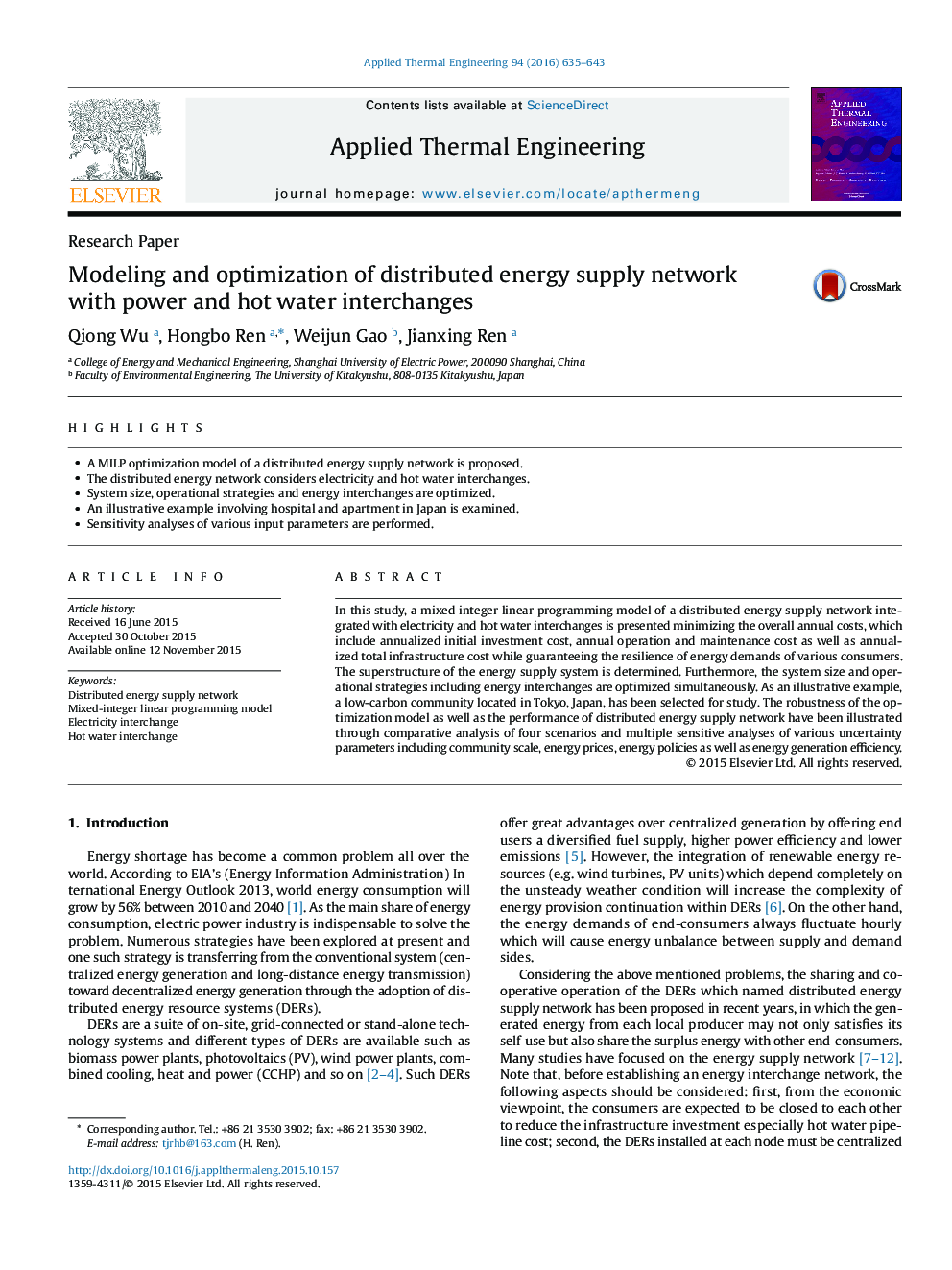| Article ID | Journal | Published Year | Pages | File Type |
|---|---|---|---|---|
| 644818 | Applied Thermal Engineering | 2016 | 9 Pages |
Abstract
In this study, a mixed integer linear programming model of a distributed energy supply network integrated with electricity and hot water interchanges is presented minimizing the overall annual costs, which include annualized initial investment cost, annual operation and maintenance cost as well as annualized total infrastructure cost while guaranteeing the resilience of energy demands of various consumers. The superstructure of the energy supply system is determined. Furthermore, the system size and operational strategies including energy interchanges are optimized simultaneously. As an illustrative example, a low-carbon community located in Tokyo, Japan, has been selected for study. The robustness of the optimization model as well as the performance of distributed energy supply network have been illustrated through comparative analysis of four scenarios and multiple sensitive analyses of various uncertainty parameters including community scale, energy prices, energy policies as well as energy generation efficiency.
Related Topics
Physical Sciences and Engineering
Chemical Engineering
Fluid Flow and Transfer Processes
Authors
Qiong Wu, Hongbo Ren, Weijun Gao, Jianxing Ren,
